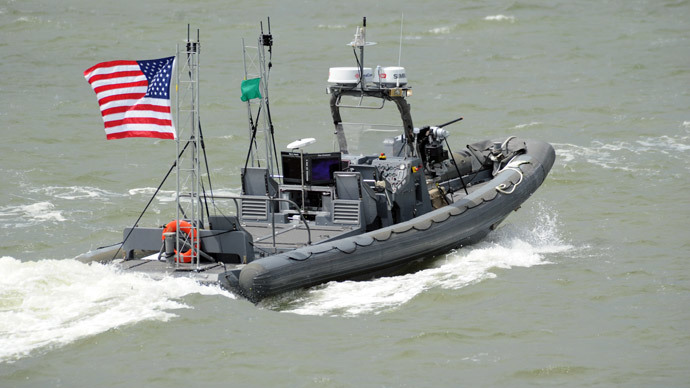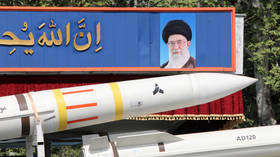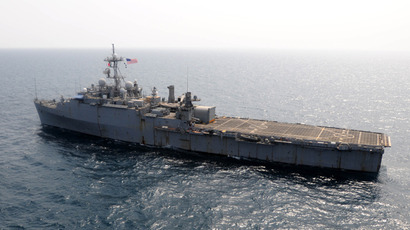Kamikaze robot swarm: US Navy to launch AI-guided unmanned gunboats ‘within a year’ (VIDEO)

The US Navy has successfully completed a test mission for autonomous, unmanned boats that can protect a bigger ship, or swarm an enemy target with co-ordinated kamikaze attacks. Using existing NASA technology, these boats will be deployed within months.
“Our sailors and marines can’t fight tomorrow’s battles using
yesterday’s technology,” said Rear Adm. Matthew Klunder,
chief of the Office of Naval Research (ONR). “This kind of
breakthrough is the result of the Navy’s long-term support for
innovative research in science and technology.”
In the August test, the details of which were revealed by the ONR
on Sunday, 13 rigid-hulled inflatable boats escorted a larger
ship – the Relentless, overseen by a single controller located on
the ship itself – down James River in Virginia.
"It could be the straits of Malacca, it could be the straits
of Hormuz," Klunder said during a media Q&A, when asked
about what the mission was simulating.
In the second part of the exercise, a boat designated as hostile
appeared on the far side of the river. Eight smaller craft, which
are usually equipped with machine guns, took off in formation and
surrounded the target vessel, with the rest staying behind to
guard the valuable mother ship.

“Think about it as replicating the functions that a human
boat pilot would do. We’ve taken that capability and extended it
to multiple units operating together...within that, we’ve
designed team behaviors,” said head of the program Robert
Brizzarola. The program had been partly inspired by the 2000
incident in which the destroyer USS Cole had its hull blown apart
by a single explosives-laden Al-Qaeda boat.
“It will remove our sailors and marines from many dangerous
situations – for instance when they need to approach hostile or
suspicious vessels. If an adversary were to fire on the USVs, no
humans would be at risk.”
The software installed on the craft was initially developed by
NASA for its Mars Curiosity Rover, which has been exploring the
surface of the planet for the past two years.
Klunder said that as well as potentially saving lives, it allows
to drastically decrease the number of personnel needed to operate
the boat. At least 40 people were initially needed to man the
vessels, which can now be controlled by just one person.
"The excitement about this technology is it is
autonomous," Klunder said. "So we're not talking about
people having to drive with toggle switches."
Though he assured that while the vessels will not only locate the
enemy, but lock him in sights, a human will have the final say on
any use of weapons.
“We have every intention to use those unmanned systems to
engage a threat. There is always a human in the loop of that
designation of the target and if so, the destruction of the
target.”

Another advantage is cost – the AI and communications will
reportedly cost only $2,000, a pittance by the usual military
expenditure standards.
"We're talking thousands, not talking millions to adapt what
we already have - existing craft in our fleet," said Klunder
"So we're not going out and buying new patrol craft."
But the aspect of the program that seems to most excite its
developers – Klunder called it the “secret sauce” – are
the bold new tactical opportunities provided by relatively cheap
boats, without risking human lives.
“A team can do more than the individual parts. That is true
with humans and it's true with robots. The cooperation opens up
the capabilities of unmanned systems. One finds a target, tells
everyone else and they figure out how to overcome it. The really
powerful thing about a swarm is that you're willing to sacrifice
some parts of it to aid the overall cause,” explained Peter
W. Singer, unmanned systems expert and senior fellow at the New
America Foundation.
The ONR says that after the test, which was a “resounding
success,” the new robotic systems could be rolled out in twelve
months. And while initially they may be used for escort missions
in high-risk areas, they should eventually become ubiquitous.
"This is something that you might find not only just on our
naval vessels, we could certainly see this utilized to protect
merchant vessels, to protect ports and harbors, used also to
protect offshore oil rigs," Klunder said.














